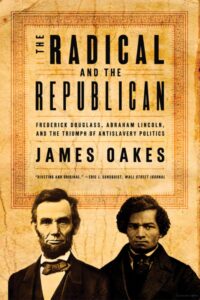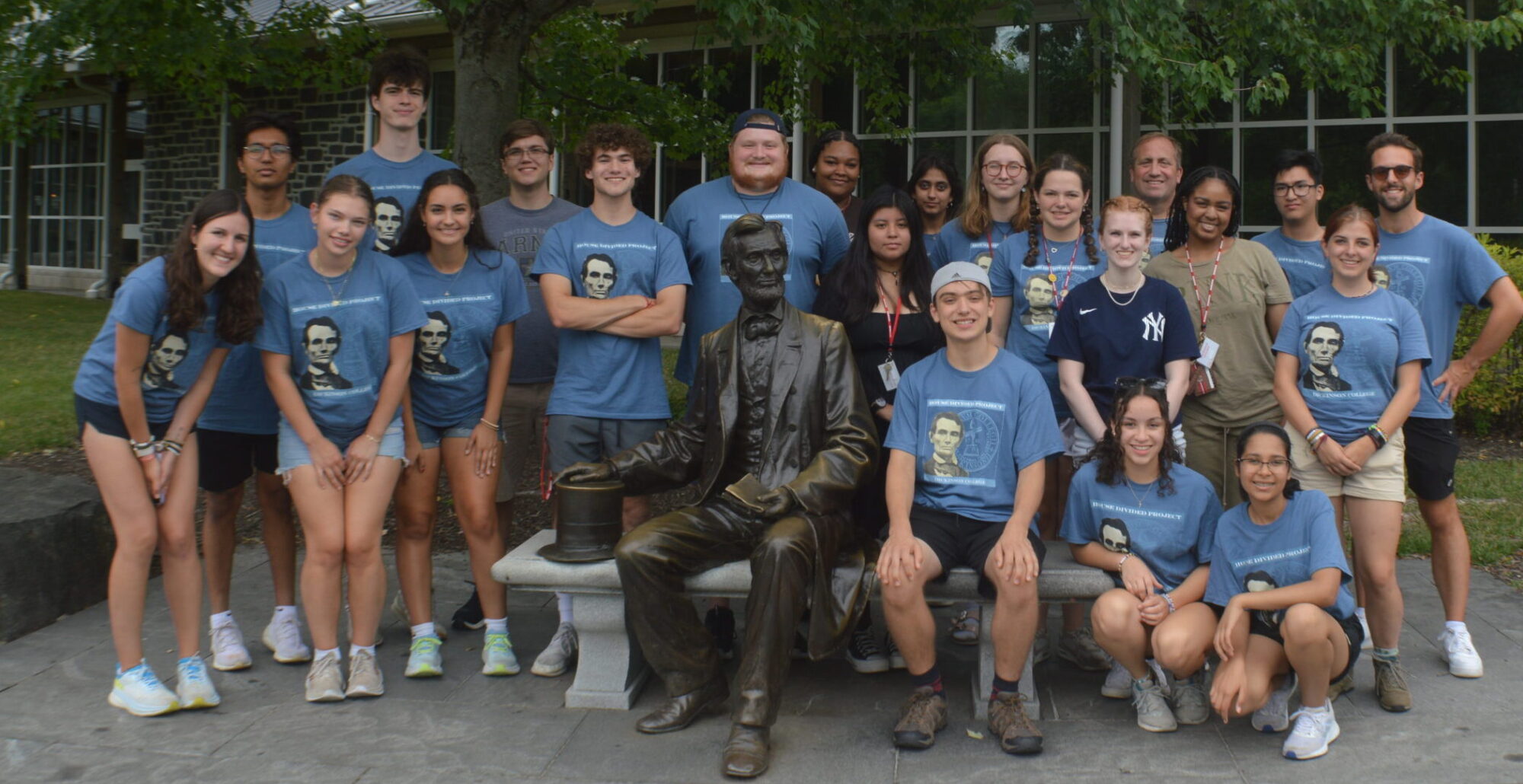Knowledge for Freedom seminar extension (Aug. 3 – 25, 2023)
- Updated Zoom schedule: Thu, Aug 3 at 10am, Wed, Aug. 16 at 10am but now TUE AUG 22 at 730pm (recordings available upon request; email summaries available at this page)
SUMMARY FROM AUG. 3 ZOOM:
 Nothing is officially due until Friday Aug 25, but by August 16, try to accomplish the following:
Nothing is officially due until Friday Aug 25, but by August 16, try to accomplish the following:
- Read the Oakes biography of Lincoln and Douglass and come to the session with questions
- Be prepared to start discussing possible topic ideas for your final essay
- Complete a draft of your second close reading assignment, or least a draft of the opening
- Zoom sessions are just helpful check ins, but remember the real work is in drafting and consulting with Prof. Pinsker via email (pinsker@msn.com)
- General writing advice for historical close readings:
- Pick a text that engages your historical imagination
- Stick to simple past tense
- Use Chicago-style footnotes (and consult Methods Center for more details)
- Consider creative attempts at quantification, like counting word usage or providing a word cloud
- Advice for strong openings:
- Consider attempting a narrative vignette built around a snippet of quotation
- Provide brief but effective summary context of the document under study
- Then pivot to a clear thesis statement that offers an original interpretation about the significance of the author’s writing strategy
- Advice for strong text summaries:
- Summarize the entire text (or text excerpt) deftly using both paraphrase and snippets of quotation
- Don’t forget to describe the format of the text
- Advice for strong context sections:
- Good context requires some outside research using high quality secondary sources
- Judge secondary sources by the expertise of the authors (requires BYLINES) and whether the format has been peer reviewed (requires academic publishing) or at least edited (requires professional publishing)
- Always start with context information about author and audience and then consider expanding into time period essentials –but always be judicious and don’t overwhelm your analysis with too much context
- Advice for strong subtext analysis:
- The best way to decode subtext is to consider what’s left out
- The easiest way to understand what’s missing from a document is by wide-ranging comparison. For example, how is this document different from earlier documents written by the same author? How does it compare to similar documents written during the time period by other authors? What about comparing the document to previous classic documents (such as the Declaration of Sentiments with the Declaration of Independence)?
- Advice for strong closing arguments:
- Return to the opening vignette or idea
- Reframe the original thesis into something thoughtful –don’t just restate it.
Summary from August 16 ZOOM:
Advice for the final Lincoln-Douglass essay:
“and a final essay (about 2,000 to 2,500 words or roughly 4 to 6 pages) that draws lessons about how best to achieve change in American democracy through comparing and contrasting the antislavery strategies of Frederick Douglass and Abraham Lincoln.”
- Read the Oakes biography carefully, especially the introduction, the conclusion and any sections which cover any of the documents which you plan to feature. Think about the differences between radicals and moderates, or between reformers and politicians (as Oakes puts it). Consider how Lincoln and Douglass differed, and where they converged, and then ask if there’s any insights or lessons from that experience about how best to achieve change in American democracy.
- As always, focus your strongest writing energy on crafting an appealing opening –one that would engage fellow students. Consider using a narrative vignette or striking statement or epigraph. Provide essential context and then pivot to an organizing thesis statement that offers a clear interpretation.
- Examples:
-
- Here is an example from Jordyn Ney’s essay: “The question thus became who they should appeal to most to ignite change and when they should take action to ensure a positive outcome. Much like today, American politics was a balancing game between when to wait and when to act.”
-
- Here is an example from Charlotte Goodman’s essay: “Sometimes the differences in approaches taken by people on the same side of an issue are so great that it seems like they are working against each other.”
-
- Here is an example from Etsub Taye’s essay: “Both Douglass and Lincoln had individual strategies which they implemented. Douglass was an outspoken reformer who used his oration to relentlessly confront and denounce slavery. Meanwhile Lincoln under the guise of moderation laid foundations for powerful coalitions. However, it was through their simultaneous efforts that the abolition of slavery was made possible.”
- The body of the essay should have a clear structure, reflecting change over time or chronology and a clear sense of research effort.
-
Essays should include a descriptive title and sub-headings when helpful, properly captioned and credited images as well as Chicago-style footnotes, citing wherever relevant the primary source texts from the course syllabus as well as any secondary sources provided by the program, most notably James Oakes’s dual biography, The Radical and the Republican (2007).
-
First footnote: James Oakes, The Radical and the Republican: Frederick Douglass, Abraham Lincoln and the Triumph of Antislavery Politics (New York: W.W. Norton, 2007), 107.
-
Subsequent footnotes: Oakes, 212.
-
-
Always remember to strive for balance: between seeing the big picture (Lincoln vs. Douglass) and highlighting your leading examples (always focus on just a few moments), between making an argument (your interpretation) and providing the essential background (context necessary for understanding by your readers), and between understanding the past and appreciating its possible insights for the future.
-
Practical tips:
-
Remember our debate on the final day of the campus program and feel free to borrow ideas from that exchange
-
Also feel free to use revised material from your earlier close reading essays when relevant
-
Don’t feel the need to include custom multi-media (videos, word clouds, maps, etc.) but go ahead and do so if you want (and have time). Just make sure that you use at least a few compelling (and properly captioned and credited) images.
-
Don’t plagiarize by mis-paraphrasing or by using AI-generated text.
-
-
Try to send or share with Prof. Pinsker drafts (full or partial –and at least of your opening paragraph). He will read them up to the afternoon of Thursday, April 24.
Summary from August 22 ZOOM:
- Remember to post PRIVATE and to properly categorize your SECOND CLOSE READINGS and FINAL ESSAYS by Friday, August 25 by around 5pm. DO NOT WORK AFTER FRIDAY EVENING WITHOUT PERMISSION. Late posts will be penalized up to 5 points per day
- For all assignments, remember to craft thesis statements and interpretive frameworks that try to explain the author or historical figure and their strategy for connecting to specific audiences
- For all assignments, remember to provide insights about text, context, subtext
- Write in the past tense when analyzing historical documents and episodes
- Organize around chronology and always try to show change over time
- Avoid plagiarism and properly cite your sources using Chicago-style footnotes
- Above all else, remember that you are writing for an audience of future students. Try to make sure that your essays are clear and compelling for people like you.
